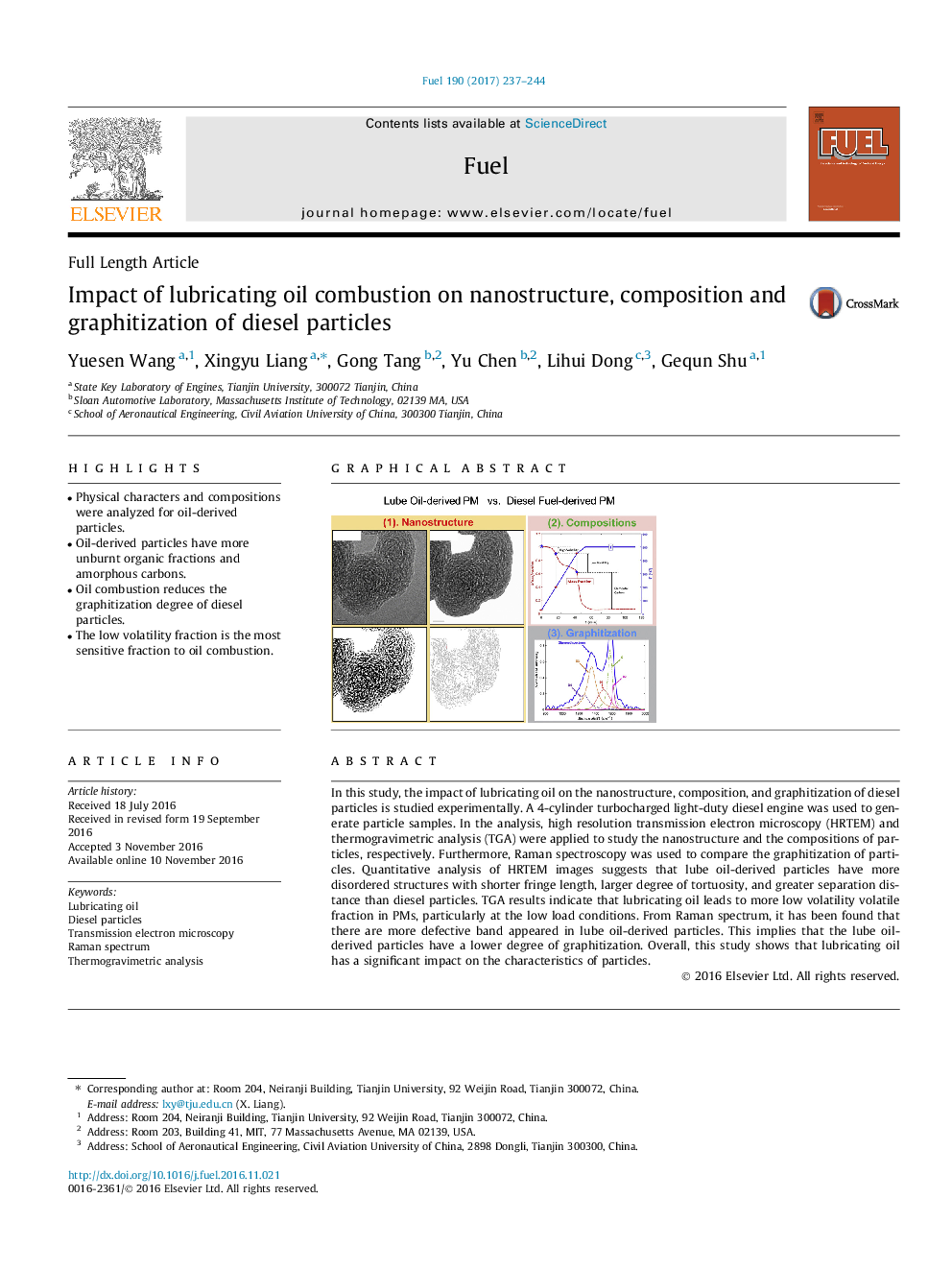| Article ID | Journal | Published Year | Pages | File Type |
|---|---|---|---|---|
| 6475577 | Fuel | 2017 | 8 Pages |
â¢Physical characters and compositions were analyzed for oil-derived particles.â¢Oil-derived particles have more unburnt organic fractions and amorphous carbons.â¢Oil combustion reduces the graphitization degree of diesel particles.â¢The low volatility fraction is the most sensitive fraction to oil combustion.
In this study, the impact of lubricating oil on the nanostructure, composition, and graphitization of diesel particles is studied experimentally. A 4-cylinder turbocharged light-duty diesel engine was used to generate particle samples. In the analysis, high resolution transmission electron microscopy (HRTEM) and thermogravimetric analysis (TGA) were applied to study the nanostructure and the compositions of particles, respectively. Furthermore, Raman spectroscopy was used to compare the graphitization of particles. Quantitative analysis of HRTEM images suggests that lube oil-derived particles have more disordered structures with shorter fringe length, larger degree of tortuosity, and greater separation distance than diesel particles. TGA results indicate that lubricating oil leads to more low volatility volatile fraction in PMs, particularly at the low load conditions. From Raman spectrum, it has been found that there are more defective band appeared in lube oil-derived particles. This implies that the lube oil-derived particles have a lower degree of graphitization. Overall, this study shows that lubricating oil has a significant impact on the characteristics of particles.
Graphical abstractDownload full-size image
